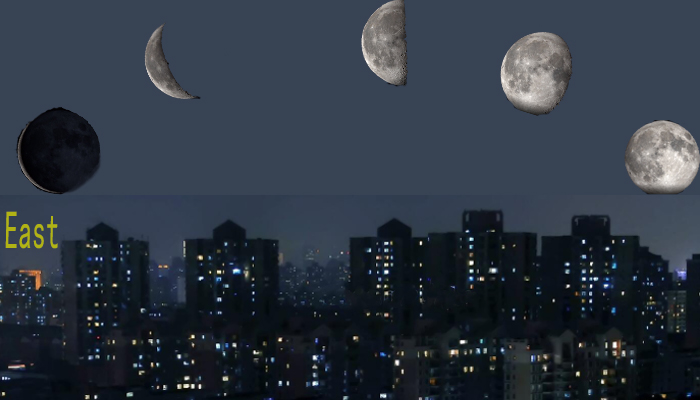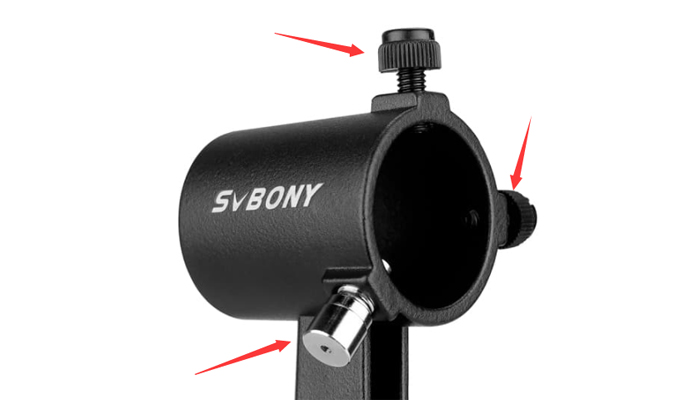SV503 telescope 0-1 find the moon

SV503 telescope 0-1 find the moon
1. Find the moon with your eyes
So I want to start the first step: find the moon. You may smile and think this is too easy. Lol, can you find it every it and don’t use the Stellarium? So think of our observation, it may be easy to see it once or twice, but it is not so easy to see the moon every night. Actually, the location of the moon in the sky is related to the phase of the moon. The moon revolves around the earth and moves eastward 13°everyday.
So from the lunar 1-15, the location of the moon in the sky is shown as the below image (at the sunset time), which means the moon is easy to find during the 15 days. The “fatter” the moon, the more east of the location.
So during this period, we will choose the time before midnight to view the moon( if you do deep-sky photography you can escape this time for the moon reflection will have influence), on lunar 15th, the moon rises after the sunset, in other words, the moon is visible during the whole night!
The next image is the moon location when the sun rises during the lunar 16th to 29th(3oth).

So we can know the best time to watch the moon is after midnight.
The NASA moon phase video and passage are very clear.
Someone may ask does the moon is available only when the sky becomes dark? Actually, only if the angle between the sun and the moon is 0-180, the moon and the sun can occur in the sky at the same time!
2. Find the moon with the telescope
Great, we just finished step 1, and for the beginners, it is really difficult to find the moon with the telescope. It is just like the old Chinese saying, it was like looking for a needle in a haystack.
2.1 learn more about your finderscope
There are several kinds of finderscope on the market, the red dot, the crosshair and some are standard or correct images, you will need time to get used to your finder scope.
Do the finder scope coaxial adjustment: find a suitable terrestrial object( with your telescope and a low power eyepiece), a building with the tip is easy to distinguish and find;

Use the SV503 scope to find the object, then adjust the finder screw, make sure the object is also in the center of the finder;
Turn the tripod and find the approximate location of the moon and use the finder scope to carefully search until the moon is in the center of the field. You will find the moon is in the main scope‘s field, too.
3. Matters needing attention
You may find the moon is very blurry, that’s because the moon is don’t in focus, you can turn the focus knob do the coarse focus, and turn the fine focus knob do the more precise adjustment repeated till you think you arrive at the “in focus” position. Trust your feeling.
Now you can enjoy the time and you just need to trace the moon movement with your tripod latitude and longitude rotate knob.
After proficient in finding, focusing, and tracking the moon, you can use eyepieces with different focal lengths to get different magnifications to observe the moon.
You can use the following formula to calculate the magnification:
Magnification = focal length of objective lens / focal length of eyepiece.
For example, I use the SV503 80ED telescope and the 20mm eyepiece to watch the moon. The magnification is
560mm/20mm=28
Thanks for watching








